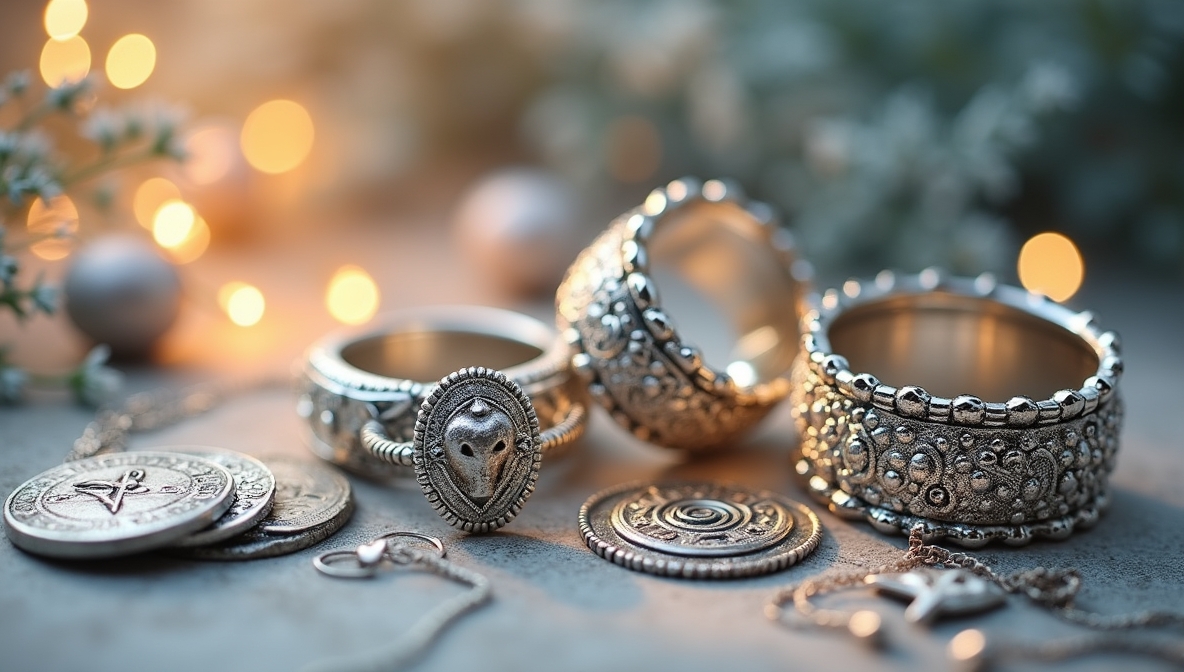Silver jewelry has always held a special place in the hearts of fashion enthusiasts, historians, and collectors alike. More than just a pretty accessory, silver is steeped in history, culture, and science. In this blog post, we uncover a range of fascinating facts about silver jewelry that you probably didn’t know. From its ancient origins and cultural significance across the globe to its modern-day styling versatility and the scientific marvels behind its luster, silver jewelry is a subject that captivates and inspires. As you read, you’ll also learn useful tips on caring for your silver pieces and discover why AIVA SILVER, an online 925 sterling silver jewelry store in India, is the perfect destination for your next timeless accessory.
1. A Glimpse Into the Past: The Historical Journey of Silver Jewelry
Silver has been cherished for thousands of years, with early civilizations using the metal to craft both everyday items and symbols of wealth. In ancient Egypt, silver was believed to be a gift from the gods. Artisans of the time meticulously handcrafted silver ornaments, which were not only used as personal adornments but also served as talismans of protection and prosperity. The intricate silverwork from this era still fascinates collectors today. Historical records reveal that silver jewelry was often passed down through generations, carrying family stories and cultural legacies.
During the Greek and Roman periods, silver was embraced as a symbol of purity and sophistication. Elaborate silver wreaths, coins, and finely detailed pendants adorned the noble and affluent, while even common citizens could afford simpler silver pieces as symbols of good fortune. The craftsmanship involved in creating these items was remarkable, with artisans pushing the boundaries of design and technique. As silver traveled along ancient trade routes, it absorbed influences from various cultures, leading to an eclectic mix of designs that still resonate in modern jewelry.
In medieval Europe, silver jewelry gained prominence once more. It was during this period that silver was often used to create religious icons and ceremonial pieces, reflecting the metal’s association with divine light and protection. Monasteries and churches commissioned silver crosses, reliquaries, and other sacred artifacts, solidifying the metal’s connection to spirituality. Moreover, silver continued to be a favored material among royalty and the elite, and its presence in royal treasuries was a testament to its enduring value.
Beyond the ancient world, the Renaissance and Baroque periods saw a revival of ornate silver jewelry. Jewelers incorporated elaborate detailing, intricate filigree, and gemstone accents into their work. The art of silver jewelry making reached new heights during these eras, and many of the techniques developed then continue to influence contemporary designs. Today, collectors and enthusiasts appreciate vintage silver jewelry not only for its beauty but also for the rich stories and traditions it represents.
2. Cultural Significance: Silver as a Symbol of Status, Spirituality, and Protection
Silver’s cultural impact goes far beyond its visual appeal. In many societies, silver jewelry is imbued with meaning and symbolism. In India, for instance, silver has long been associated with purity and is an integral part of wedding and festive traditions. Brides often wear intricate silver ornaments as symbols of prosperity and marital bliss. Celebrations and rituals across various cultures include the use of silver to invite positive energy and ward off negative influences.
In some Latin American cultures, silver jewelry is believed to carry protective powers. Amulets and talismans made of silver are thought to deflect evil spirits and bring good luck. Similarly, in East Asia, silver is often linked to the moon, symbolizing calmness, reflection, and balance. The belief in silver’s protective and healing properties has been passed down through generations, influencing everything from traditional medicine to modern-day superstitions.
Silver’s role in spiritual practices is evident in many ancient rituals. It is not uncommon to find silver jewelry used in ceremonies intended to invoke divine guidance or to honor ancestral spirits. The reflective quality of silver has led some to believe that it captures the light of the heavens, serving as a bridge between the physical and spiritual worlds. Today, this cultural heritage continues to inspire designers and collectors alike. When you choose a piece from AIVA SILVER, you are not just buying an accessory—you are embracing a tradition that spans millennia.
3. The Science Behind Silver: A Marvel of Nature and Technology
While silver’s beauty and cultural significance are well-known, there are several surprising scientific facts about this remarkable metal. Silver is the most conductive metal, both in terms of electricity and heat. This quality makes it indispensable in modern technology, ranging from electronics to solar panels. However, in the realm of jewelry, it’s the reflective and malleable properties of silver that make it so desirable.
One of the most intriguing scientific facts about silver is its ability to inhibit bacterial growth. Silver ions have antimicrobial properties, which is why silver has been used historically in medicinal applications, such as wound dressings and water purification systems. Some researchers suggest that wearing silver jewelry may offer subtle health benefits by creating an environment that discourages the growth of harmful bacteria. Although these benefits are not a substitute for modern medicine, they add an extra layer of interest to the metal’s profile.
Silver also exhibits a phenomenon known as tarnishing—a process where silver reacts with sulfur-containing compounds in the air to form a dark layer of silver sulfide. While tarnish is often seen as a drawback, many vintage pieces proudly display their aged patina as a mark of authenticity and history. Some collectors even prefer the “antique look” that tarnished silver offers, as it tells a story of years past. The process of cleaning and restoring tarnished silver can be both an art and a science, requiring careful handling and the right techniques to restore its original luster without damaging the intricate details.

